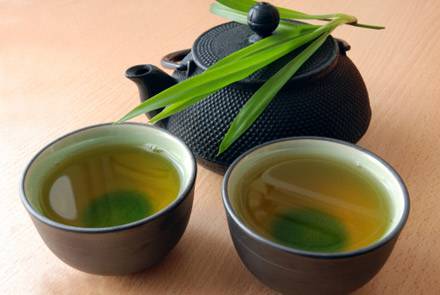A component found in green tea may be very effective at destroying oral cancer cells, while leaving healthy cells alone. The research from Penn State could become very useful in fighting oral cancer, as well as other types of cancer.
Green tea originated in China, but it has since become a very popular beverage throughout the world. Many claims have been made for the beneficial health effects of green tea, but only a few of them have actually been backed by scientific investigations. Green tea contains a myriad of enzymes, amino acids, carbohydrates, lipids, sterols, related compounds, phytochemicals, and dietary minerals which show great promise in fighting against cancer, cardiovascular diseases and glycemic control, but not many peer reviewed studies actually showed that green tea is effective against a specific type of cancer.
There have been previous studies which showed that epigallocatechin-3-gallate — EGCG — a compound found in green tea, killed oral cancer cells without harming normal cells, but the reason and mechanism through which this is done has not been understood. Joshua Lambert, associate professor of food science and co-director of Penn State’s Center for Plant and Mushroom Foods for Health believes he has found the answer to that mystery.
“EGCG is doing something to damage the mitochondria and that mitochondrial damage sets up a cycle causing more damage and it spirals out, until the cell undergoes programmed cell death,” said Lambert. “It looks like EGCG causes the formation of reactive oxygen species in cancer cells, which damages the mitochondria, and the mitochondria responds by making more reactive oxygen species.”
Mitochondria are membrane bound organelles found in most eukaryotic cells often referred to as the powerhouses of the cells. They generate the energy that our cells need to do their jobs. In a way, they generate the chemical energy for our body to function. If you destroy the mitochondria, you basically destroy the cell. EGCG basically does just that – but only in cancerous cells – it leaves healthy cells unscathed.
Researchers grew the normal and cancer cells on petri dishes and then exposed them to EGCG, the major polyphenol found in green tea, at concentrations typically found in the saliva after consuming green tea. They found that a specific protein, SIRT3, is critical to the process.
“It plays an important role in mitochondrial function and in anti-oxidant response in lots of tissues in the body, so the idea that EGCG might selectively affect the activity of sirtuin 3 in cancer cells — to turn it off — and in normal cells — to turn it on — is probably applicable in multiple kinds of cancers,” Lambert said.
The next step is to test the substance on animals, and ultimately, in human trials. In the meantime, just like many previous studies, this shows a lot of promise – green tea may be a valuable tool against cancer.
“The problem with a lot of chemotherapy drugs — especially early chemotherapy drugs — is that they really just target rapidly dividing cells, so cancer divides rapidly, but so do cells in your hair follicles and cells in your intestines, so you have a lot of side effects,” said Lambert. “But you don’t see these sorts of side effects with green tea consumption.”










